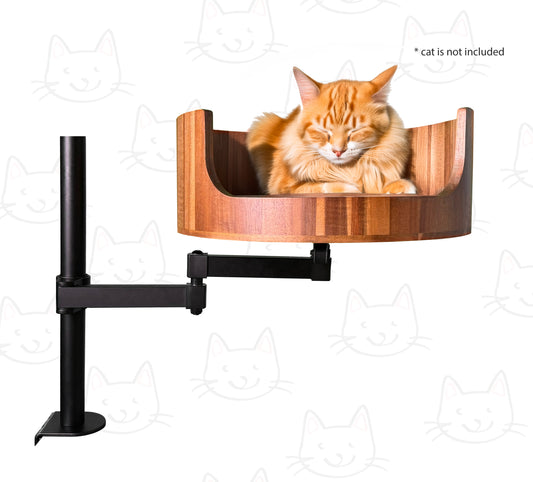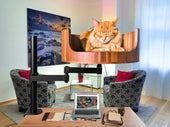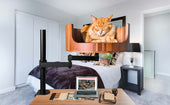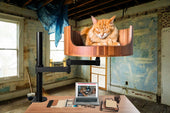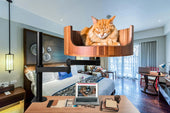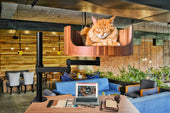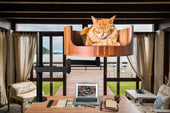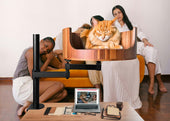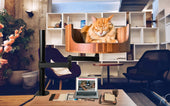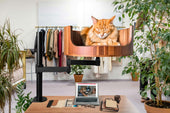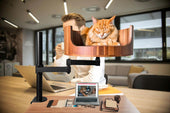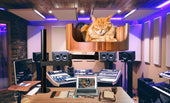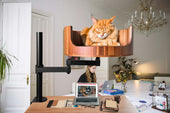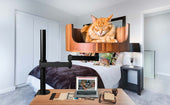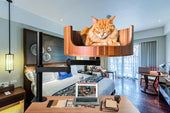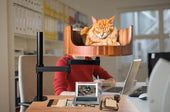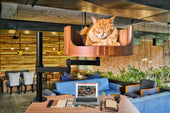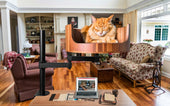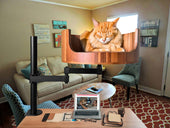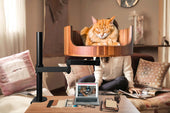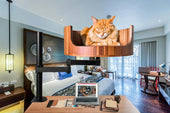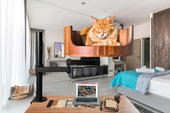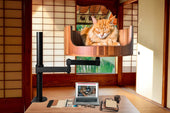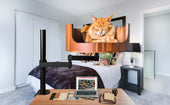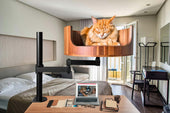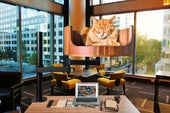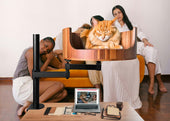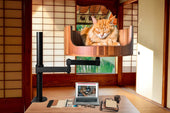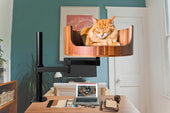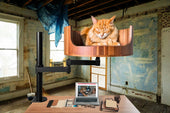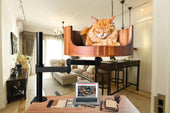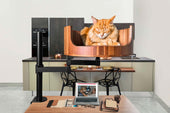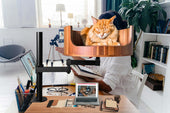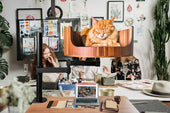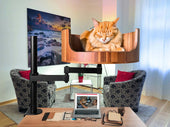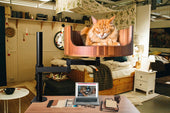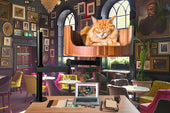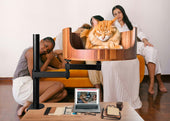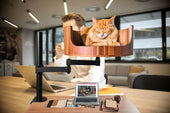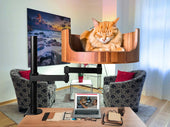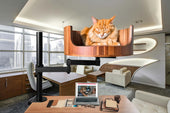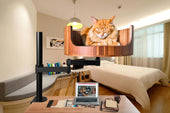
Cat Bite After Petting: Understanding the Behavior
Share
Desk Cat Nest is notorious for being a feisty furball that loves to snuggle one moment and deliver a sharp bite the next. If you've ever experienced a cat bite after petting a seemingly content kitty, you're not alone. Understanding this behavior can help pet owners navigate their relationships with their feline companions more effectively. In this article, we will delve into the reasons behind cat bites after petting, discuss common triggers for this behavior, and provide tips on how to prevent and manage cat bites in the future.
Cats are complex creatures with their own unique personalities and boundaries. While they may enjoy being petted in certain areas or for a specific duration, they can quickly become overstimulated or feel threatened, leading to a defensive bite. By recognizing the signs that your cat may be reaching its breaking point, such as flattened ears, dilated pupils, or twitching tail, you can adjust your interactions accordingly to avoid getting bitten. Additionally, providing outlets for your cat's natural instincts to scratch, play, and hunt can help redirect their pent-up energy and prevent them from resorting to biting as a means of communication. Learning to read your cat's body language and respecting their boundaries is key to fostering a harmonious relationship between you and your feline friend.
1. Cats may bite after being petted due to overstimulation or discomfort with the way they are being touched.
2. Understanding a cat's body language and behavioral cues can help prevent bites during petting sessions.
3. Bites from cats can lead to serious infections and should be treated promptly by a healthcare provider.
4. Respect the cat's boundaries and preferences during petting to avoid triggering a defensive response.
5. Training and socializing cats from a young age can help prevent aggressive behaviors, including biting, in the future.
## Causes of Cat Bites After Petting
Cat bites after petting can occur due to a variety of reasons. One common cause is overstimulation in cats, where they may become overwhelmed with the petting and suddenly lash out. Cats may also bite after petting if they are in pain or discomfort, such as arthritis or dental issues, causing them to become irritable. Another reason for cat bites after petting is redirected aggression, where the cat may be agitated by something else in their environment and take it out on the person petting them. Understanding these underlying causes can help cat owners prevent and manage such behavior.
## Signs of Aggression in Cats
It is important for cat owners to recognize the signs of aggression in cats in order to prevent bites after petting. Some common signs of aggression in cats include dilated pupils, ears flattened against the head, growling or hissing, swatting, and changes in body language such as a stiffening tail. By being able to identify these signs early on, cat owners can take steps to prevent their cat from escalating to a bite after petting.
## How to Prevent Cat Bites After Petting
There are several ways to prevent cat bites after petting. One key strategy is to observe and respect the cat's body language and signals during petting sessions. If the cat shows signs of discomfort or overstimulation, it is important to give them space and stop petting. Providing enrichment and interactive play for the cat can also help release pent-up energy and reduce the likelihood of aggressive behavior. Additionally, regular veterinary check-ups can help identify any underlying medical issues that may be causing the cat to bite after petting.
## Training and Behavior Modification Techniques
For cats that exhibit consistent biting behavior after petting, training and behavior modification techniques may be necessary. Gradual desensitization, where the cat is exposed to petting in small, manageable doses, can help them become more comfortable with human touch. Positive reinforcement training, such as rewarding the cat for calm behavior during petting sessions, can also be effective in changing their behavior. Working with a professional animal behaviorist can provide further guidance and support in addressing cat bites after petting.
Desk Cat Nest FAQ
How can Desk Cat Nest help with my cat's biting behavior after petting?
Desk Cat Nest provides a comfortable and safe space for your cat to retreat to when they are feeling overwhelmed or overstimulated. By giving your cat a designated area to relax in, they are less likely to resort to biting when they need space.
Is Desk Cat Nest suitable for all cat breeds?
Desk Cat Nest is designed to accommodate cats of all sizes and breeds. The soft cushion and cozy design make it a welcoming space for any feline friend.
How do I introduce my cat to Desk Cat Nest?
Start by placing Desk Cat Nest in a quiet and calm area where your cat likes to spend time. Encourage your cat to explore the nest by placing treats or toys inside. Allow your cat to approach the nest on their own terms to create a positive association.
Can Desk Cat Nest replace training and behavior modification for cat biting?
Desk Cat Nest is a helpful tool in managing your cat's biting behavior, but it is not a substitute for proper training and behavior modification techniques. If your cat's biting issues persist, it is recommended to consult with a professional behaviorist or veterinarian for further guidance.
How do I clean Desk Cat Nest?
Desk Cat Nest can be easily cleaned by removing the cushion and machine washing it on a gentle cycle. The nest itself can be wiped down with a damp cloth and mild detergent. Make sure to thoroughly dry the nest before allowing your cat to use it again.
In conclusion, choosing a Desk Cat Bed is a valuable choice for preventing cat bites after petting. This innovative product provides a safe and comfortable space for your cat to rest while also giving them a designated space where they can retreat and feel secure. By providing your cat with their own space, they are less likely to feel the need to assert dominance through aggressive behavior like biting. Additionally, the Desk Cat Bed promotes good behavior by creating a positive association with petting and interaction. Investing in a Desk Cat Bed will not only benefit your cat's well-being, but also improve the bond between you and your furry friend.

